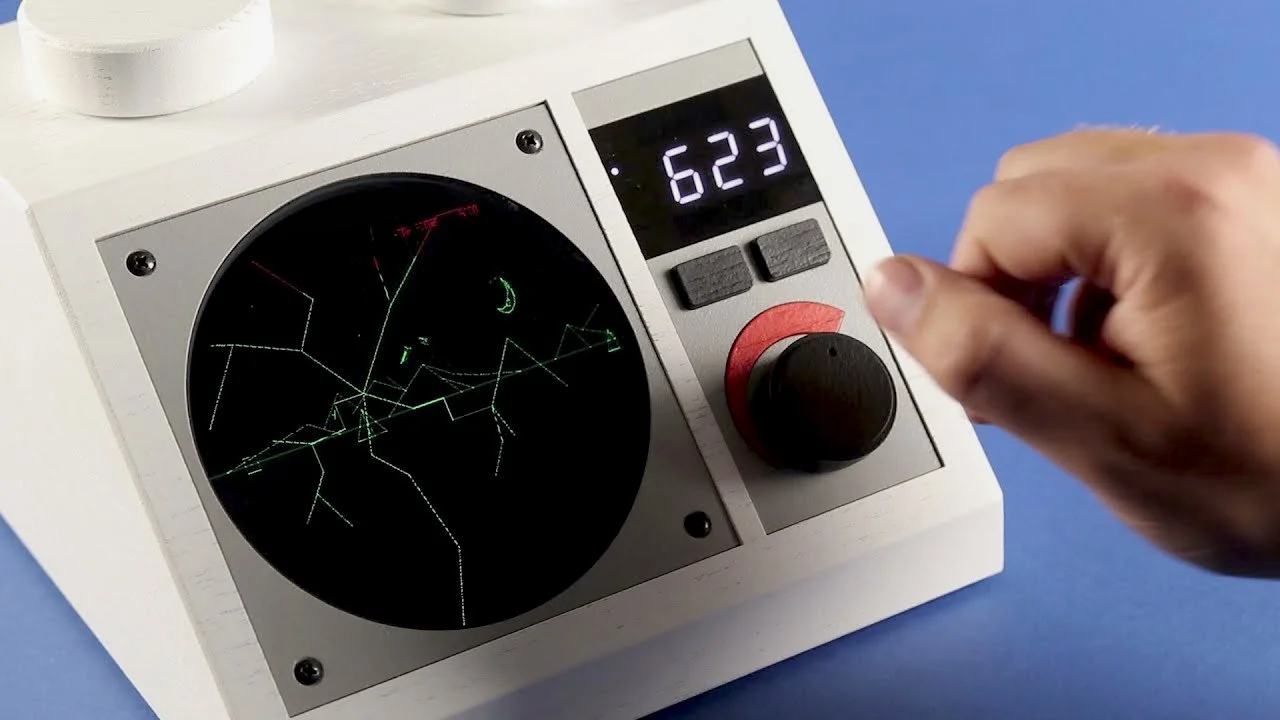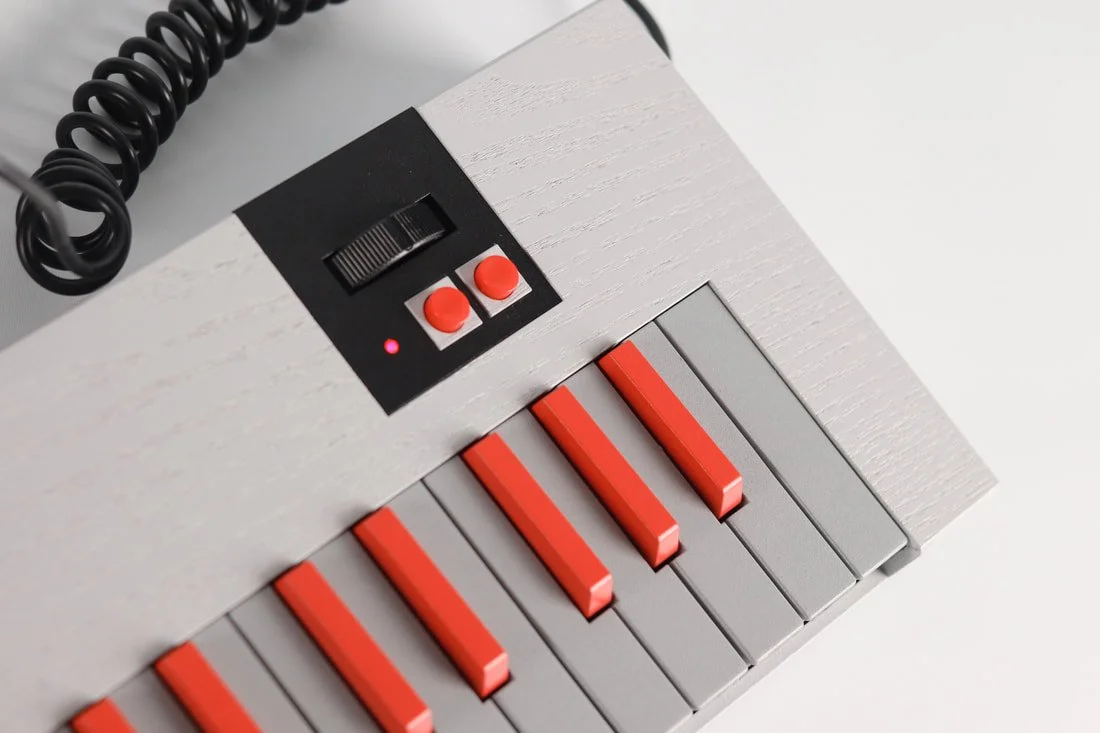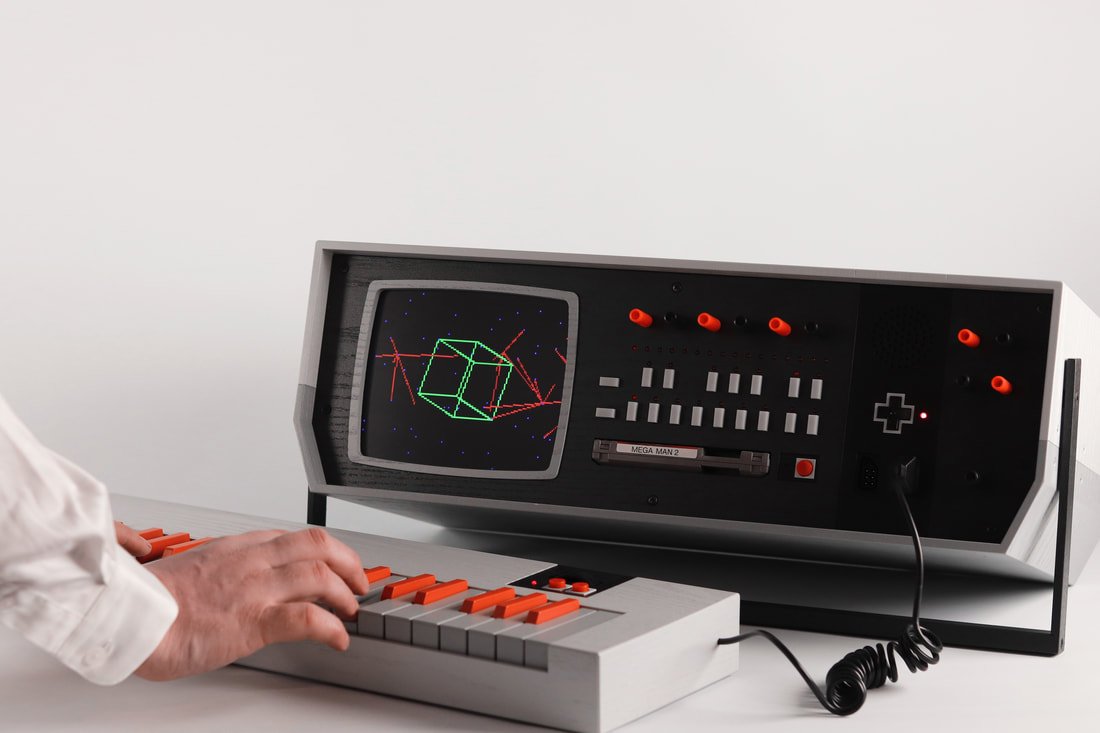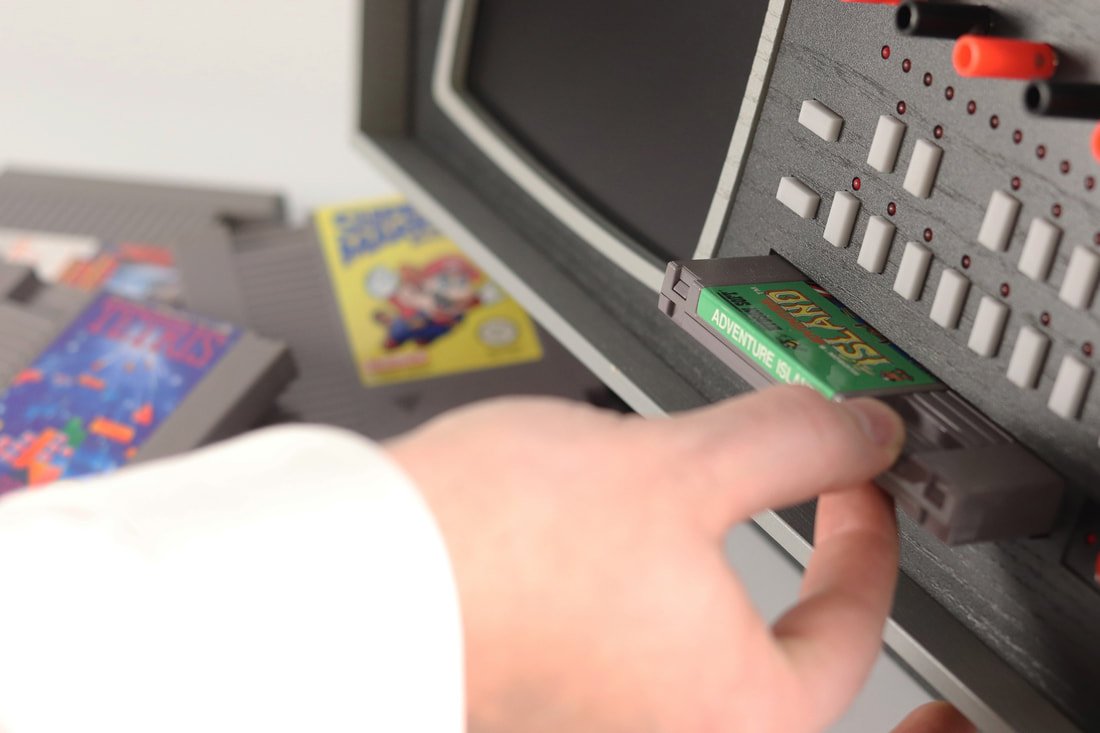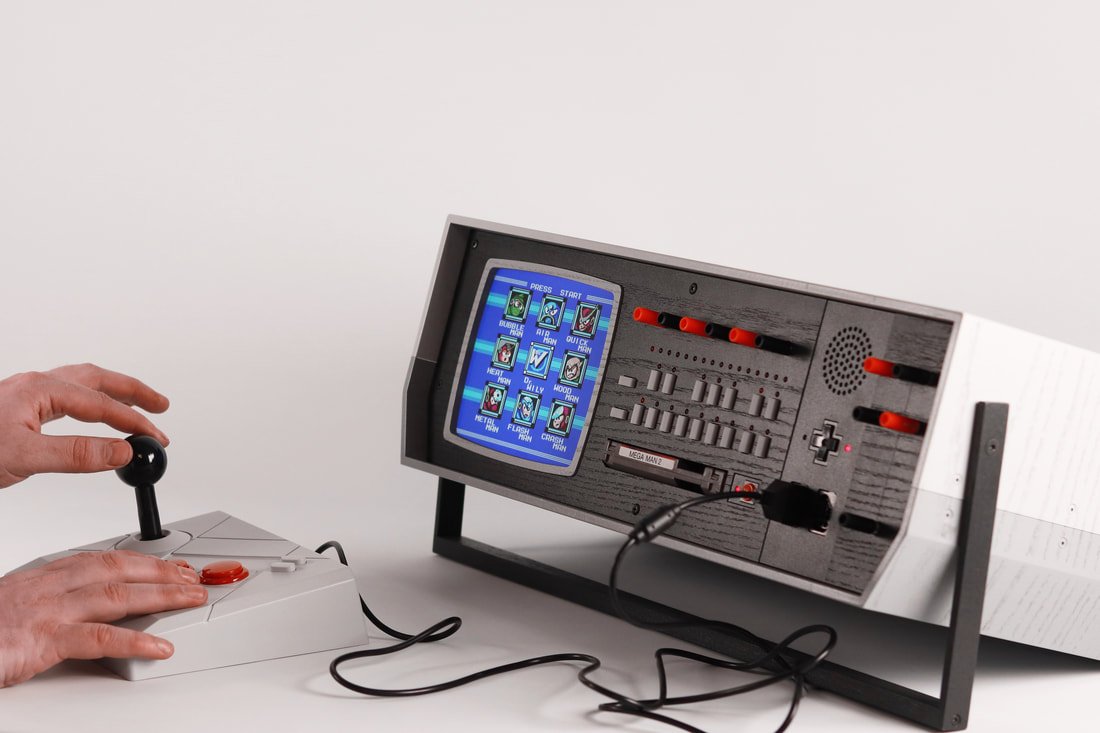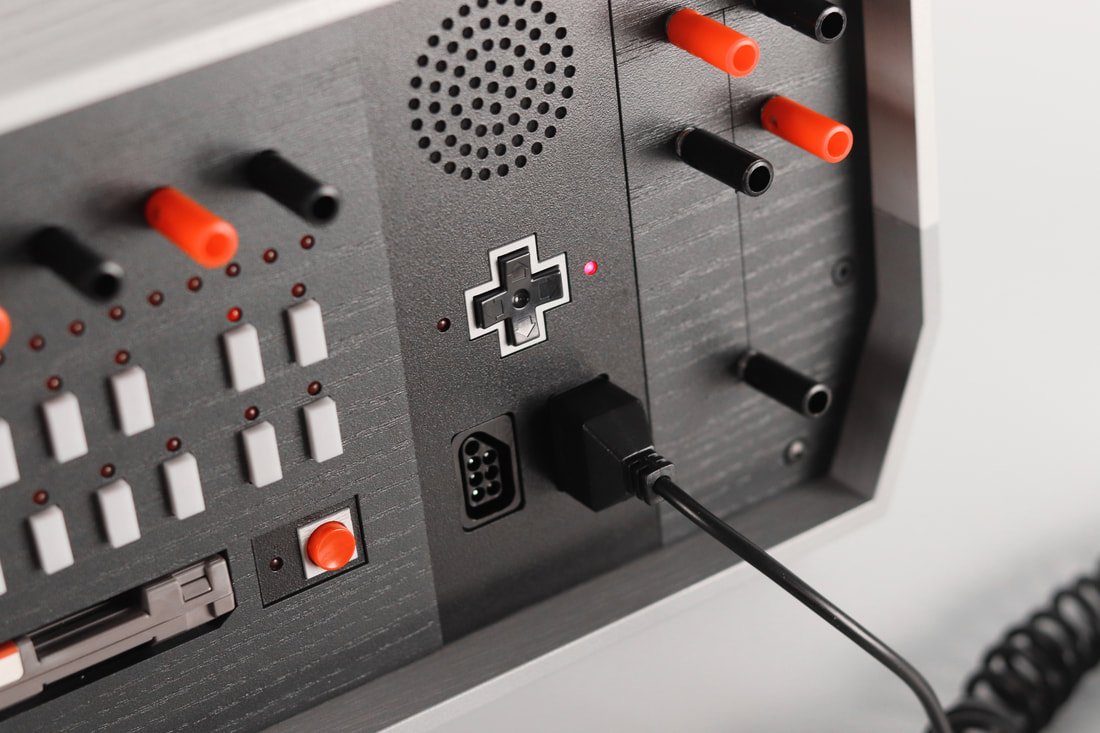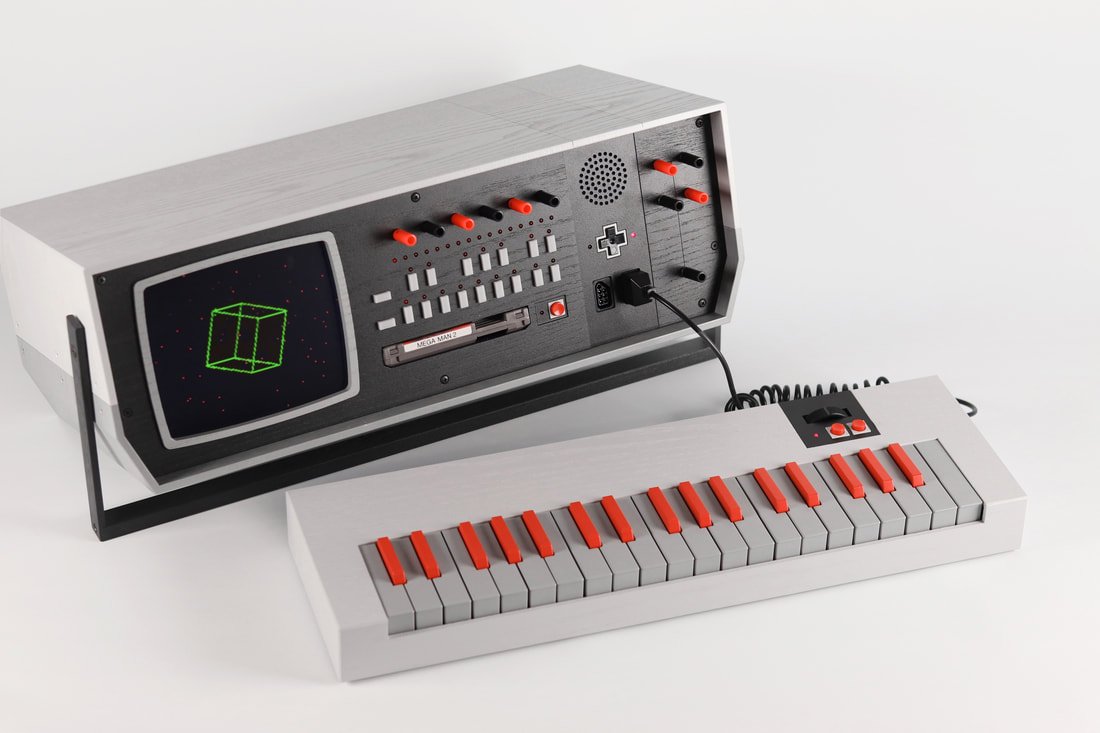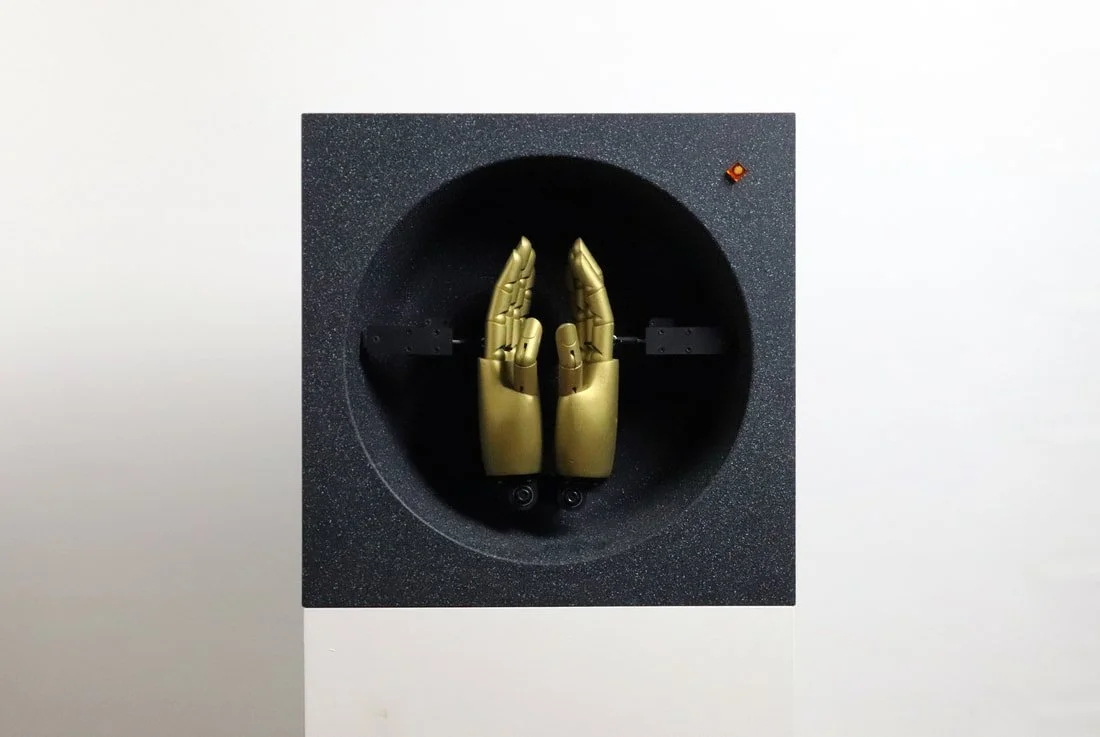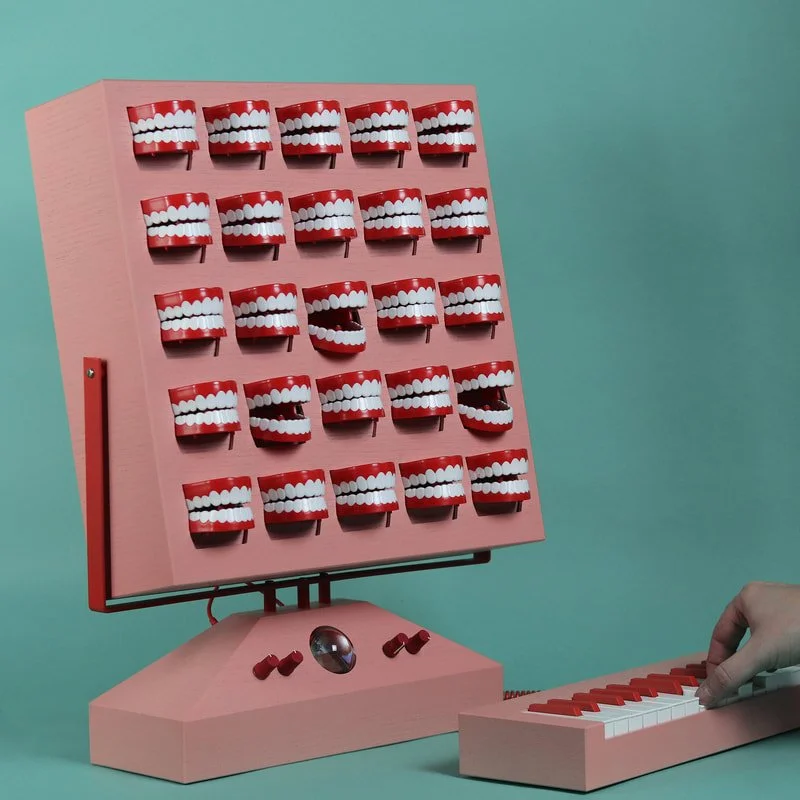Love’s Language
Taste & Skill
Published: 4/13/22
By: Andrew Neyer
Love Hultén is an audiovisual artist and woodworker working in Gothenburg, Sweden. He produces one-of-a-kind pieces of Art that take the form of synthesizers, noise-makers, and video games. Hultén’s work combines a wide range of disciplines; woodworking, user interface design, sound engineering, and most of all, good taste.
His work highlights the essence of objects and instruments that might be overlooked. By simplifying and stylizing the housing of these electronics, Love zooms in on the magic hidden inside. Beautiful wooden casings set the stage for us to elevate forgotten arcade games and synths to a new category of Art.
“I design, build, polish, assemble, and even make the packaging—it’s my own isolated chain. Like most craftsmen, I’m obsessed with control and don’t trust people.”
– Love Hultén, WIRED
The proof is in putting craft above everything. Hultén makes all his work on commissions. This format allows him to create incredible work that he can sell for the price he wants. I would argue this is one of the highest forms of commerce that we should be integrating. Commission-based work knows its audience. It leverages the creator’s greatest skills and gives opportunities to improve upon previous successful works. Often, commissions gradually become larger and more bespoke, and as a result, the artist’s work becomes more expensive. This price increase is sometimes seen as a negative consequence for potential buyers. But why shouldn’t great Art be expensive? Shouldn’t Artists be rewarded for making remarkable work? After all, Love Hultén’s works are entirely custom. Custom is costly to make, so it should be even more expensive to purchase. Personally, I would rather realize a work of Art is out of my price range than be presented with a worse version of that work of Art for less money. (Finding the sweet spot in between is always nice.) Ferrari doesn’t make a cheap car for people who can’t afford a $200,000 vehicle; instead, they make $220 hats for their true fans.
New Waves
Great Art gives you something to keep even if you don’t own it. Seeing the love that goes into each of Love’s projects is inspiring, and the visual pleasure is a keepsake for anybody. Just like the masterpieces in museums, you do not need to own them to be in awe. A big takeaway from Hultén’s designs is that we can increase an object’s value by changing the delivery and language of something. He removes decoration and functions you do not use or need, and makes it playful.
I connect with this type of work very deeply. Ever since I was a kid, I was always taking apart electronics from VCRs to guitar amps and would reconfigure them into new housings. I have a deep craving to simplify and remove the decoration from every object I encounter. Most of the time, I try to buy items designed to my taste, and other times I will edit them. Some objects are easier than others. My favorites products have no labeling or an easily removable label, like my deodorant (which peels right off with no residue! [Fig. 2]). Some of these explorations maybe went too far. For example, I made minimalist oak face-plates with wooden buttons for our oven and microwave in the style of a Braun calculator [Fig. 3]. But, I think this is the same way I design products, especially lighting. All of my light fixture designs use basic lamp parts as the components, but they have a “stylized skin” to my taste. The combination of oak and powder-coated steel is a material language I continue to use throughout all my products, which is why I’m drawn to Hultén’s work.
Synth You’ve Been Gone
We tend to find our taste by wading through its absence. Recognizing what we don’t like about objects informs what we want to add or omit. So, when we are frustrated by someone’s design decisions, don’t get too bogged down because it’s shaping your taste.
I've found that opportunity likes to hide in the mundane. For example, Take the simple LEGO 2x2 decorated slope piece [Fig. 1]. It has been in almost every kid's LEGO bin and, therefore, it is also in our visual inventory. Love Hultén reappropriates this familiar shape in The Brix System series. He sets himself up for success by reusing this template to explore how far he can experiment with this concept.
Good design uses a formula, or rather, a concoction. The trick is finding where your taste and your skills overlap. Once you find that magic combination, make lots of work, publish it, share it with others, and give it time. If you gain patrons, keep reinvesting into your work. Each project ratchets to new skills and better execution. And better work baits better clients. This method is a slow and meticulous grind, but it produces steady, healthy growth. It is rooted in profitable commissions that can evolve and sustain for many years. This is how to earn a living from making Art.
Method
Know Your Taste.
Hone Your Skills.
Make Art.
Publish.
Share.
Give it Time.
Rinse & Repeat ∞
Know Your Taste. Hone Your Skills. Make Art. Publish. Share. Give it Time. Rinse & Repeat ∞
What’s Love Got To Do With It?
In 1992, Gary Chapman wrote a book, The Five Love Languages, that went on to become a New York Times Best Seller. Chapman suggests that to discover another person's love language, one must observe the way they express love to others, and analyze what they complain about most often and what they request from their significant other most often.
According to Chapman, the five "love languages" are:
words of affirmation (compliments)
quality time
receiving gifts
acts of service
physical touch
This is obviously intended for relationships and better understanding ourselves, but I think this list is an excellent checklist for product design.
Is this design remarkable? (does it receive compliments?)
Is your time well spent using this product?
Did someone go above and beyond to make this product feel like a gift?
Is it easy to understand and productive to use?
Does it feel good to handle the product?
The tool that checks all these marks is applying love to your taste and skills.
We all know this at heart, but it's easy to forget. Love makes things better. It’s why your coffee tastes better when you spend more time making it or why you keep those silly handmade cards until you die. It's why the Trailer Park hotdog from Senate [Fig. 4] is a work of Art. There is nothing special about a hot dog, bacon, cheese, crushed barbeque chips, or coleslaw. But, when we take the ordinary and pair it with our tastes and skills, we arrive at the extraordinary.
Love makes everything better.
Fig. 4
Trailer Park hotdog from Senate
Context
Fig. 1
LEGO 2x2 decorated slope
Love’s Work
LEGO bricks in 6:1 scale. Size for a 4x4 brick is 20x20cm
NES-SY37
Conceptual synthesizer and a homage to the Nintendo Entertainment System.
The 800x600 LCD can also be used for gaming as the NES-SY37 accepts NES cartridges.
A conceptual semi-acoustic drum machine built around mechanics, used with synchronized backtracks. Like any modern drum machine, it allow users to program their own rhythms and beats. Via custom-built controller boards, MIDI signals are converted and sent to an array of electromagnetic solenoids, in real-time. Drumsticks are then mounted onto these solenoids, extending the stroke. When triggered by MIDI, the drumstick collide with the acoustic instrument.
VOC-25 is a conceptual vocal synthesizer based on the Axoloti Core and 25 sets of plastic teeth, each set representing a unique note on the keyboard. The three-part wooden setup echoes the look of a classic desktop computer including monitor, main console and keyboard. RAW vocal audio samples are fed into the main console via USB, creating a personal voice bank. There are two built-in effects, reverb and delay.
All images above and copy extracted from lovehulten.com
Fig. 2
Andrew Neyer’s deodorant with the labels peeled off
Fig. 3
Braun BNE001BK
Thoughts
– What is your taste?
– How do you apply your taste?
– Have you ever rehoused something you love?



